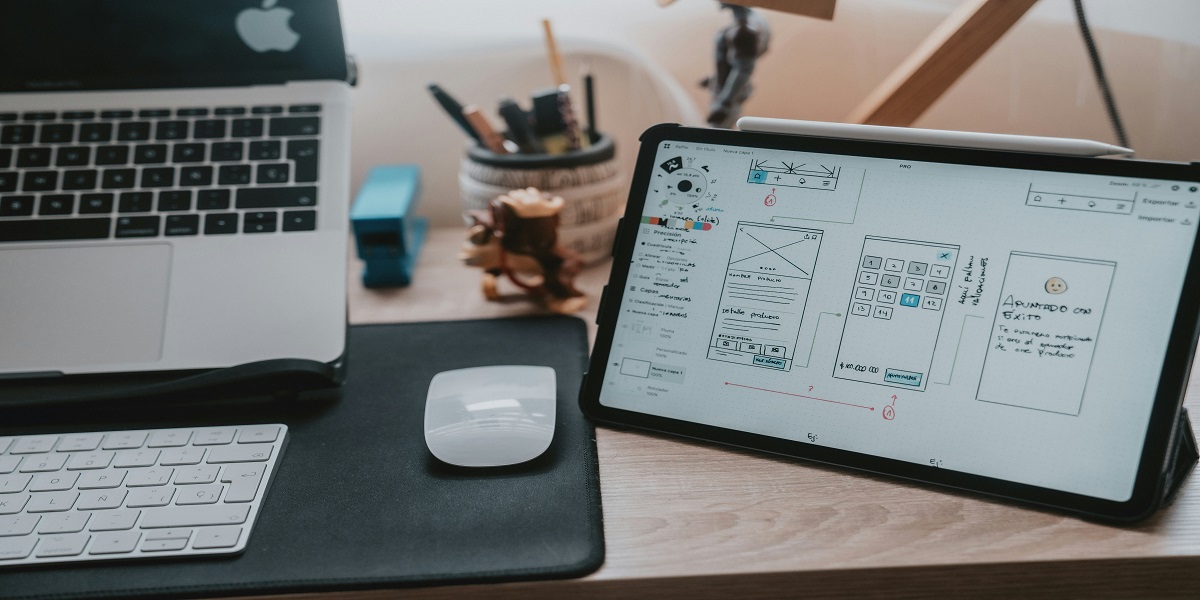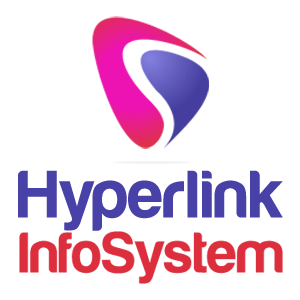
Contributing in a UI/UX plan can boost your trade by improving client fulfillment and engagement. great UI/UX plan makes your site or app less demanding to explore, which keeps clients cheerful and empowers them to return. This, in turn, can increase your client base and progress deals. By focusing on consistent client involvement, you not just pulling in more guests but also constructing belief and dependability with your clients. Eventually, keen speculation in the UI/UX plan leads to more fruitful and competitive commerce.
UI/UX plan stands for Client Interface and Client Involvement plan, and it's all about making computerized items simple and agreeable to utilize. UI plan centers on the appearance and format of an item, guaranteeing that everything from buttons to symbols is outwardly engaging and instinctive. UX plan, on the other hand, is concerned with the by and large feel of the item, emphasizing client fulfillment by progressing the way clients connect with it. Together, UI and UX work to ensure consistent and locked-in involvement for users.
Understanding the significance of UI/UX plan is pivotal for businesses aiming to succeed within the advanced world. A well-designed user interface can pull in more clients by making an online site or app outwardly engaging and simple to explore. In the interim, an awesome client encounter guarantees that clients discover the item valuable and pleasant, which can lead to expanded client maintenance and client devotion. By prioritizing UI/UX plan, businesses can separate themselves from competitors and construct a more grounded association with their gathering of people.
The UI/UX plan may be an efficient approach to creating user-centered advanced encounters that meet the wants and desires of the target group of people. It includes a few key stages, each building upon the previous one to guarantee a cohesive and successful plan arrangement.
Discovery and Research: This beginning stage includes gathering experiences into the target group of people, their needs, behaviors, and inclinations through client inquiries about strategies such as overviews, interviews, and ease of use testing.Designers must analyze advertising patterns, competitive scenes, and trade objectives to advise the plan heading and guarantee arrangement with vital objectives.User personas are created based on inquiries about discoveries, speaking to particular client groups, and their unique characteristics and necessities.
Wireframing and Prototyping: Wireframes give a low-fidelity diagram of the client interface, permitting architects to outline out the data design, route, and stream of client interactions.Prototypes are more useful representations of the ultimate item, empowering architects to test and refine the client encounter with genuine users.Iterative cycles of wireframing, prototyping, and client testing offer assistance in recognizing and addressing usability issues early within the plan.
Visual Design and Branding: Once the client involvement has been characterized, the visual plan stage centers on making a tastefully satisfying and steady visual dialect that adjusts to the brand identity.This incorporates deciding color plans, typography, iconography, and other visual components that contribute to the overall look and feel of the advanced item.
Testing and Iteration: After the visual plan has been connected, assistance testing and emphasis cycles are conducted to assemble client criticism and distinguish regions for improvement.Usability testing, A/B testing, and analytics information are utilized to approve plan choices and optimize client involvement based on real-world utilization data.Continuous cycle and refinement guarantee that the plan remains significant, open, and adjusted to advancing client needs and inclinations.
Contributing in a UI/UX plan offers various benefits that can essentially progress your business's success. A well-crafted client interface and client encounter not meant to pull in more clients but to keep them locked in and fulfilled. This will lead to higher client maintenance, expanded deals, and more grounded brand notoriety.
Increased Client Engagement: An outwardly engaging and easy-to-use interface energizes clients to spend more time on your site or app. When clients discover it easy to explore and associate it with your item, they are more likely to investigate its highlights and offerings. This expanded engagement can lead to higher change rates and more openings for client interaction.
Higher Client Maintenance: A positive client encounter guarantees that clients are fulfilled with their intelligence. When clients appreciate their involvement, they are more likely to return and proceed utilizing your item. This dependability can decrease churn rates and increase the lifetime value of each client, making your trade more feasible within the long run.
Improved Brand Notoriety: A well-designed UI/UX reflects polished skill and consideration to detail. When clients have a consistent and wonderful encounter, they are more likely to believe your brand and prescribe it to others. This positive word-of-mouth can improve your brand's notoriety and draw in unused clients, giving you a competitive edge within the market.
Better Change Rates: Successful UI/UX design can direct clients towards desired activities, such as making a purchase or signing up for a benefit. By streamlining the method and evacuating boundaries, you'll make strides in the probability of transformations. This not only boosts your deals but also makes a difference in accomplishing commerce objectives more proficiently.
Contributing in a proficient UI/UX plan is pivotal for making an advanced item that stands out in today's competitive showcase. Proficient architects have the skill to make interfaces that are not as outwardly engaging but too profoundly useful. They know how to adjust aesthetics with convenience, guaranteeing that clients can easily navigate and associate with your site or app. This proficient touch can make a critical difference in client fulfillment and engagement, eventually leading to better trade outcomes.
Moreover, proficient UI/UX plan can save time and assets within the long run. By completely investigating and understanding client needs, proficient architects can make instinctive plans that decrease the probability of exorbitant updates and fixes later on. A well-designed product reduces user frustration, brings down bolster costs, and improves productivity. Contributing in a proficient UI/UX plan isn't almost making an excellent item; it's approximately building a user-friendly and maintainable arrangement that drives development and victory for your trade.
Measuring the effect of UI/UX ventures is fundamental to understanding how these advancements benefit your trade. One of the essential ways to measure this effect is through client input. By collecting and analyzing comments and proposals from clients, you'll be able pick up bits of knowledge into their encounters and distinguish zones for assisting change. This input makes a difference in fine-tuning your plan to better meet client needs and expectations.
Another compelling strategy is to track key execution markers (KPIs) related to client behavior and engagement. Measurements such as bounce rates, session terms, and change rates give quantitative data on how clients connected along with your site or app. Analyzing these measurements some time recently and after executing UI/UX changes can highlight the viability of your plan endeavors. Progress KPIs ordinarily show a positive effect, appearing to make clients discover your item more pleasant and less demanding to use.
Additionally, conducting convenience tests can provide important data on the effect of your UI/UX ventures. Amid these tests, genuine clients complete particular errands, whereas their intuitions are watched and recorded. This handle makes a difference in identifying any convenience issues and ranges where clients battle. By tending to these issues, you'll upgrade the by-and-large client encounter, leading to higher fulfillment and superior trade results. Combining client criticism, KPIs, and convenience testing offers a comprehensive approach to measuring the success of your UI/UX speculations.
A viable UI/UX plan is basic for making computerized items that clients cherish. It includes a few key viewpoints that guarantee a website or app isn't outwardly engaging but too simple and pleasant to utilize. Understanding these perspectives can help businesses create better client experiences.
Usability: Ease of use is about making your product simple to utilize. Clients ought to be able to achieve their objectives rapidly and effectively without disarray. Clear routes and instinctive plan components are vital to achieving high usability.
Consistency: Consistency in the plan makes a difference when clients feel comfortable and at home with your item. This involves utilizing the same textual styles, colors, and symbols throughout your site or app. Consistency diminishes the learning curve and makes client involvement seamless.
Accessibility: Availability guarantees that all clients, counting those with disabilities, can utilize your item. This includes planning with highlights like console route, screen peruser compatibility, and adequate color differentiation. Prioritizing accessibility makes your item accessible to a broader audience.
Feedback: Giving criticism to clients is fundamental to responsive involvement. This could incorporate visual prompts, such as changes in button color when clicked, or messages that affirm activities have been completed. Criticism makes a difference; clients get it as the result of their activities and guide them through the interface.
Visual Plan: A visual plan is approximately making a stylishly satisfying item that draws in clients. It incorporates choosing the correct colors, typography, and symbolism to communicate your brand message. A great visual plan can make your item more locked in and important.
compelling UI/UX plan is built upon a few fundamental angles that work together to make consistent and lock in advanced encounters. Client investigation and personal advancement are basic to begin with, as they offer assistance to creators to get the target gathering of people, their needs, behaviors, and inclinations. By making point-by-point client personas, originators can tailor the interface and encounter to meet particular client prerequisites and desires.
Data engineering and route play a significant part in guaranteeing that clients can effortlessly discover and get to the data or highlights they require. A well-structured and instinctive route framework, combined with a consistent stream of data, improves convenience and diminishes disappointment. Visual plan and branding are also key perspectives, as they contribute to the overall stylish offer and fortify brand personality. Consistency in visual components, such as color plans, typography, and iconography, makes a cohesive and recognizable encounter over different touchpoints.
Actualizing UI/UX plan techniques requires a well-planned approach custom-made to the particular needs and assets of a business. There are a few alternatives to consider, each with its own points of interest and contemplations.
Building an In-House UI/UX Team: Building up an inside UI/UX group permits for near collaboration and profound understanding of the commerce objectives and target audience.In-house architects can give progress back, persistently optimize client involvement, and guarantee consistency over all advanced touchpoints.However, building an in-house group requires noteworthy venture in selecting, preparing, and holding best UI/UX ability.
Partnering with UI/UX Agencies or Consultants: Outsourcing the UI/UX plan to specialized offices or experts gives access to a wealth of skills and industry best practices.External accomplices can offer new points of view and objectivity, as well as the capacity to scale assets up or down based on venture needs.This approach can be more cost-effective for short-term or particular ventures but may require extra exertion in communication and information exchange.
Upskilling Existing Teams: For businesses with constrained assets, upskilling existing groups in UI/UX plan standards can be a practical option.Internal preparation programs, workshops, and online courses can offer assistance in creating UI/UX aptitudes within the current workforce.While cost-effective, this approach may require more time and continuous support to guarantee steady application of UI/UX best practices.
Contributing to a UI/UX plan could be a keen move for any trade looking to develop and succeed. Great plan, not only because it draws in more clients but also because it keeps them locked in and fulfilled. By focusing on consistent and pleasant client involvement, businesses can increase client dependability and boost deals. Besides, a well-designed item stands out in a crowded advertisement, giving your business a competitive edge. Eventually, prioritizing the UI/UX plan leads to more joyful clients and a more grounded, more fruitful trade.
